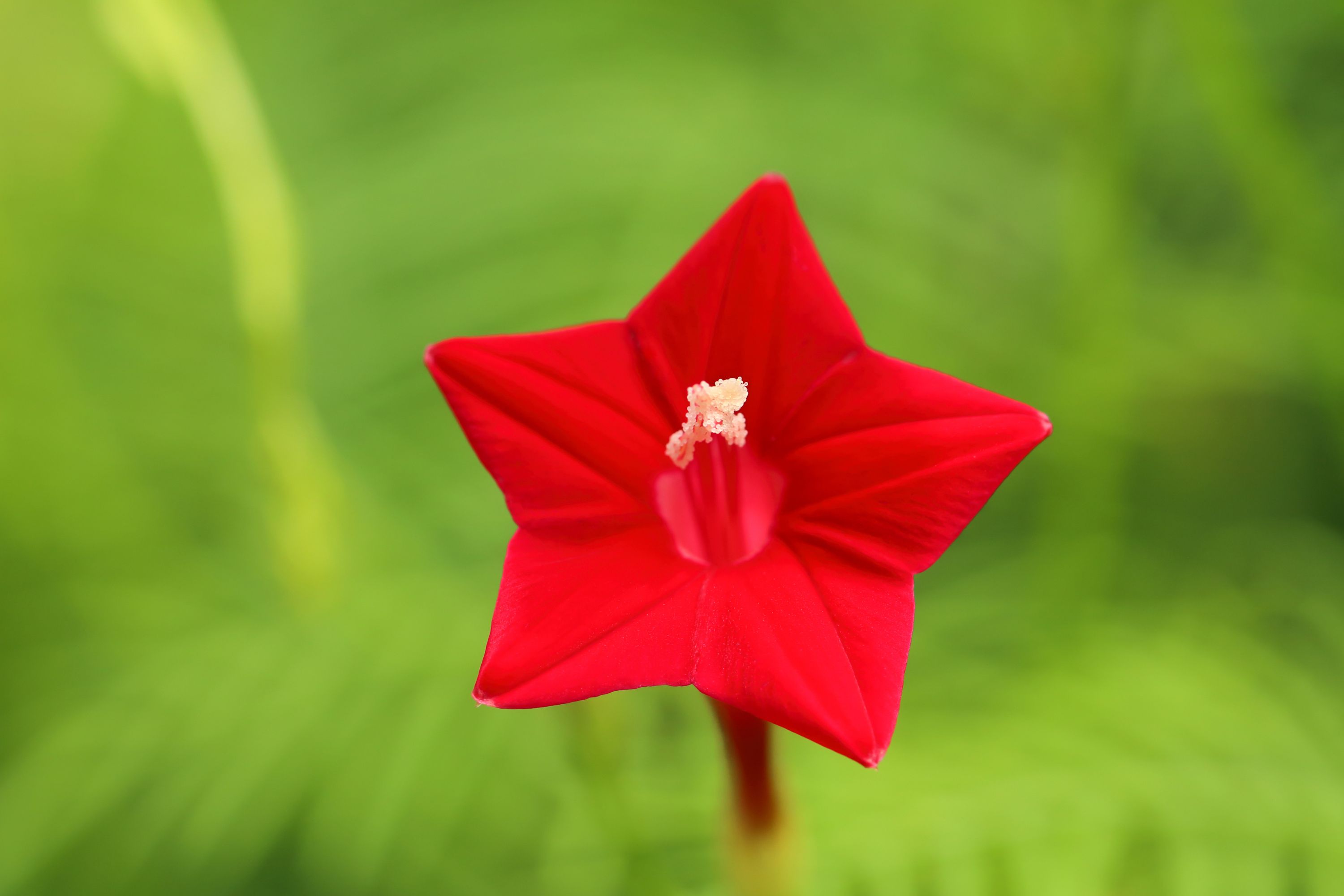Cypress vine
(Ipomoea quamoclit)

Description
Ipomoea quamoclit, commonly known as cypress vine, cypress vine morning glory, cardinal creeper, cardinal vine, star glory, star of Bethlehem or hummingbird vine, is a species of vine in the family Convolvulaceae native to tropical regions of the New World and naturalized elsewhere in the tropics. I. quamoclit is a herbaceous, twining vine growing up to 3–10 feet (0.91–3.05 m) tall. The leaves are 1–4 inches (25–102 mm) long, deeply lobed (nearly pinnate), with 9-19 lobes on each side of the leaf. The flowers are 1–2 inches (25–51 mm) long and 1 inch (25 mm) in diameter, trumpet-shaped with five points, and can be red, pink or white. This species was first formally named by Carl Linnaeus in his seminal work Species plantarum (1753), but without any real detail as the plant was already well-known in most parts of the world. Curiously, he stated its origin as, simply, "Habitat in India", while at the same time referencing earlier describers of the plant who noted its origin as Central America. There are two schools of thought as to the origin of the species epithet quamoclit. The first, originally put forward by the French writer and botanist Alexandre de Théis, is that it is derived from Greek. The second is that the name comes from the Nahuatl language of Mexico. Neither explanation can be verified, although the botanist Daniel F. Austin makes an argument that the latter is the most likely. This plant is native to northern South America north to Mexico but has been widely distributed throughout the world since Europeans first began to explore the Americas, initially becoming popular as a medicinal plant and later as an ornamental. It has become naturalised in many tropical areas and is considered an invasive weed in some.
Taxonomic tree:







